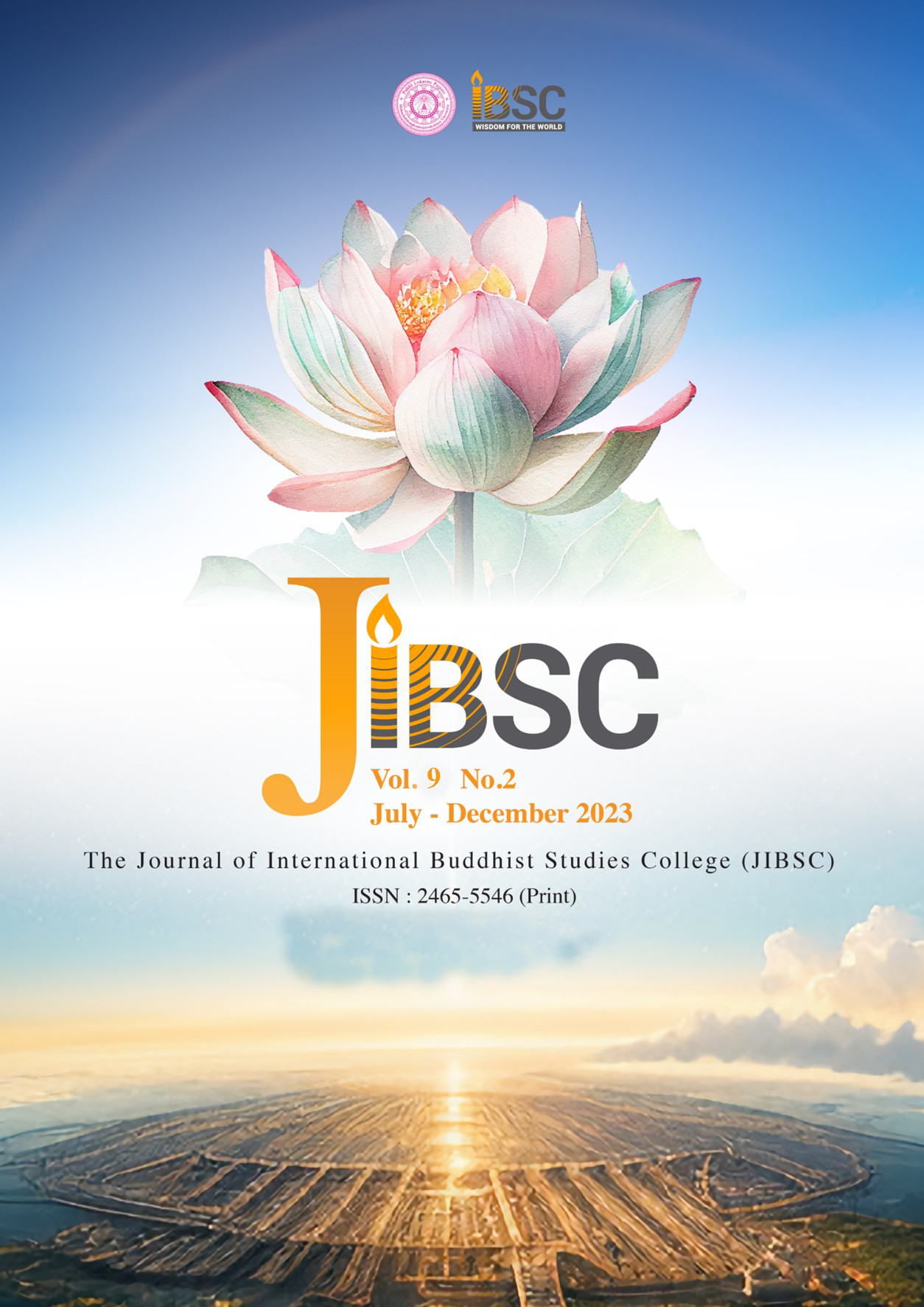Guidelines for the Temple Architectures of the Khmer Delta in Southern Vietnam
Main Article Content
Abstract
The objectives of this research are: 1) to study the characteristics of traditional Khmer architectures in southern Vietnam, 2) to survey attitude and acceptance of the Buddhists in area for the appropriate use of the traditional design element and 3) to propose guidelines for the contemporary building design based on the traditional architecture. The methodology of this research is qualitative approach with a survey of attitude of people at the areas. The interpretation of the findings is made by using two basic statistics: the mean (), percent (%), and the standard deviation (SD), also the deep informantion about designs and technique gain from in-depth interview with 6 key informants.
The results of this study indicate that the majority of conventional architectural forms in the southern region of Vietnam, particularly temples, exhibit influences from Cambodian and Thai architectural styles, notably seen in the distinct architectural style of the pagoda. Public perception and approval of modern architectural designs in these areas are generally viewed favorably, with an average mean rating of 3.96 and an average standard deviation of 0.47. The architectural composition of a Khmer Delta temple encompasses various components such as uposatha (Ordination Hall), sālās, stupa, school and Kuti (residence for Buddhist monks), sculptures, Buddha images, Bhodi tree, gates, and the Khmer Theravāda culture. Regarding the curriculum content, contemporary methodologies and construction materials are employed in conjunction with architectural design processes to incorporate elements related to representations of the Buddha. These edifices pose a distinct challenge in comprehending their dynamic characteristics due to the diverse materials, features, institutional purposes, architectural styles, residential functions, and the intricate and diverse architectural configurations present. The focus of this research centers on the intricate architectural style of pagodas, specifically highlighting the temples situated in the Khmer Delta region.
Article Details
The Journal of TCI is licensed under a Creative Commons Attribution-NonCommercial-NoDerivatives 4.0 International (CC BY-NC-ND 4.0) licence unless otherwise stated. Please read our Policies page for more information on Open Access, copyright and permissions.
References
Assavavirulhakarn P. The ascendancy of Theravāda Buddhism in Southeast Asia. UMI Dissertation Information Service; 1990.
Dang Kieu Nhan. Water use and competition in the Mekong Delta. Vietnam, 2007.
Donald K, Swearer. The Buddhist World of Southeast Asia, NewYork: University of New York Press, 2010.
Harris, Ian. Cambodian Buddhism: History and Practice, Bangkok: O.S. Printing House, 2006.
Helen Lucas. “The Architecture of health buildings Providing care - can architects help”. The British Journal of General Practice, 2002.
Howard Crosby Butler. Ancient Architecture in Syria. The Princeton University, 1913.
Hương, Lê. Sử Liệu Phù Nam. Historical Datas of Funan. Vietnam: Sai Gon, 1974.
Khun, Chandara. Invented Traditions and Collective Memory as the Key to National Identity. The Case of Study Kampuchia Krom, Southern Vietnam, 2013.
Le Manh That, Lich Su Phat Giao Viet-Nam, tap I, Thuan Hoa province, 1999.
Martin, Polkinghorne. Makers and Models: Decorative Lintels of Khmer temples 7th to 11th centuries. University Seney, 2007
Nguyễn Hùng Mạnh, Architecture coloniale, Soc Trang, 05 February 2007.
Nola, Randall. Khmer Culture & Custom Seminar. Australia, 1992.
Philip, Taylor. The Khmer Lands of Vietnam: Environment, Cosmology and Sovereignty. Singapore: NUS, Press, 2014.
Smitthi Siribhadra, Elizabeth Moor. Palace of the Gods: Khmer Art and Architecture in Thailand. Bangkok: River Books, 1992.
Stuart-Fox, Martin. Buddhism and Politics in Laos, Cambodia, Myanmar and Thailand. 2010.
Thich Tâm Quang. Gems of Buddhist Wisdom, Những Hạt Ngọc Trí Tuệ Trong Phật Giáo, 2000.
Thong Tin, Portrait. Restoring the Soul of Khmer Pagodas, Vietnam (Bao Anh), June 9, 2014.
Tripitaka Chabab Tongyai is the Thai word meaning “The Great Gilt Edition”, Tripitaka-Edition or Buddhist doctrine, Chabab - Volume and Tongyai - great or big gilt.
Ty Kheo Thien Minh. [Sử Du Nhập Phật Giáo Nguyên Thủy Đến Việt Nam] “Propagation of Theravāda Buddhism to Vietnam”.
Yen Ba Vu. Khmer-Vietnamese Relations from 1930 to 1954 in the Mekong Delta. Columbia University 2019.


